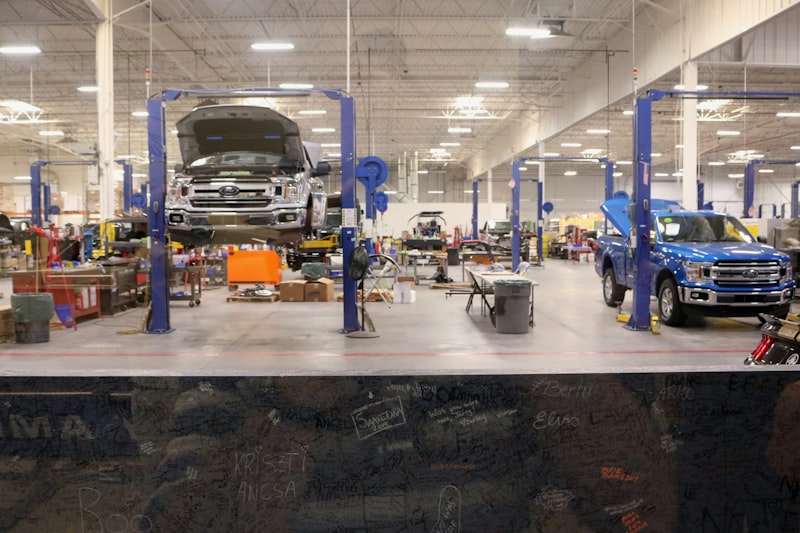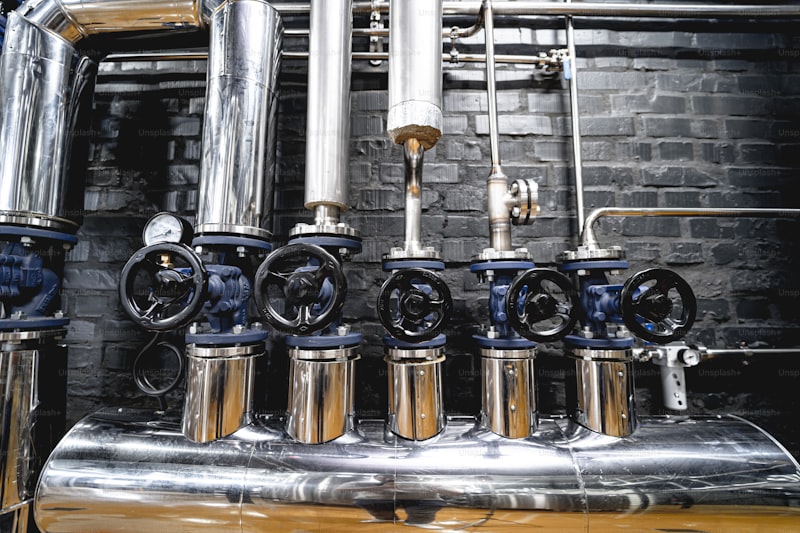Hey there, fellow DIY enthusiast! Ever found yourself in a sticky situation with your car’s exhaust pipes? Don’t sweat it – repairing them yourself can be easier than you think. Let’s dive into a DIY guide that’ll have you fixing those exhaust pipes like a pro in no time.
First off, why would you need to repair your car’s exhaust pipes yourself? Well, imagine this: you’re cruising down the road, and suddenly there’s an annoying rattling noise coming from under your car. Chances are, it’s a damaged exhaust pipe causing all that racket. Instead of rushing to the mechanic and shelling out big bucks, you can tackle this repair yourself with just a few tools and a bit of know-how.
The most common issue you might encounter is a hole or crack in the exhaust pipe. These can occur due to rust, corrosion, or even physical damage from road debris. To start your DIY repair, you’ll need safety goggles, gloves, a wire brush, exhaust patching compound, and heat-resistant epoxy. These materials will help you clean the damaged area, fill in any holes, and reinforce the pipe for a durable fix.
Begin by locating the damaged section of the exhaust pipe. It’s usually easiest to spot by looking for signs of rust or visible holes. Once identified, use the wire brush to clean the area thoroughly. Removing any loose debris and rust will ensure a better bond when you apply the patching compound.

Next, apply the exhaust patching compound according to the manufacturer’s instructions. This usually involves mixing the compound and spreading it over the cleaned area using a putty knife. Make sure to press firmly to create a tight seal. Once applied, allow it to dry completely before moving on to the next step.
After the patching compound has dried, apply a layer of heat-resistant epoxy over the repaired area. This will provide additional strength and protection against heat and elements. Again, follow the epoxy manufacturer’s instructions for mixing and application. Once everything is set and dry, start your car and listen for any leaks. If all sounds good, congratulations – you’ve just successfully repaired your car’s exhaust pipe!
Remember, while DIY repairs can save you money, safety always comes first. If you’re unsure about any step or if the damage seems extensive, it’s best to consult a professional mechanic. Now, go ahead and tackle that repair with confidence!
Step-by-Step: DIY Tips for Fixing Car Exhaust Pipes at Home
Firstly, assess the damage. Look closely at your exhaust system to pinpoint the issue. It could be a hole, a crack, or simply corrosion eating away at the metal. Identifying the problem area will guide your repair process.
Next, gather your tools and materials. You’ll typically need safety gloves, eye protection, a hacksaw or pipe cutter, exhaust repair tape or patch kit, wire brush, sandpaper, and high-temperature exhaust sealant. Having everything on hand ensures a smoother repair process.
Prepare the work area. Park your car on a flat surface with enough space around it to move freely. Ensure the engine has cooled down completely before starting any work on the exhaust system.
Now, begin the repair process by cleaning the damaged area. Use a wire brush or sandpaper to remove any rust, dirt, or debris around the damaged section. This step ensures a better seal and adhesion for the repair materials.
If you’re dealing with a small hole or crack, consider using an exhaust repair tape or patch kit. These are designed to withstand high temperatures and provide a temporary fix for minor leaks. Follow the manufacturer’s instructions carefully for application.
For more extensive damage like a large hole or severe corrosion, you may need to replace a section of the exhaust pipe. Measure the damaged area and use a hacksaw or pipe cutter to remove the affected part. Then, install a new section of pipe using clamps or welding, depending on your skill level and tools available.
Finally, after completing the repair, start the engine and check for any leaks or unusual noises. Take your car for a short drive to ensure everything is functioning correctly and that the repair holds up under normal operating conditions.
Fixing your car’s exhaust pipes at home can be a challenging but satisfying task. With the right tools, materials, and a methodical approach, you can successfully tackle minor issues and keep your vehicle running smoothly without breaking the bank.
Essential Tools and Techniques for DIY Car Exhaust Pipe Repair
DIY enthusiasts know the satisfaction of tackling car repairs themselves. When it comes to fixing a car exhaust pipe, having the right tools and techniques can make all the difference. Let’s dive into what you’ll need to get the job done effectively.
First off, safety is key. Before you start, ensure the car is parked on a flat surface with the parking brake engaged. Let the car cool down completely, especially the exhaust system, to avoid burns.
-
Safety Gear: Start with safety goggles and gloves to protect yourself from debris and sharp edges.
-
Jack and Jack Stands: Lift the car securely to access the exhaust system underneath.
-
Exhaust Repair Kit: This includes patching material like heat-resistant tape, clamps, and sealing paste.
-
Wire Brush and Sandpaper: Clean the affected area thoroughly to prepare it for repairs.
-
Hacksaw or Tube Cutter: Use these to cut out damaged sections of the exhaust pipe.
-
Muffler Cement: Ideal for sealing small leaks and gaps in the exhaust system.
-
Inspect and Identify: Locate the damaged section of the exhaust pipe. Look for holes, rust, or cracks that need immediate attention.
-
Prepare the Area: Clean the surface around the damaged area using a wire brush and sandpaper to ensure a good seal.
-
Cut and Replace: Use a hacksaw or tube cutter to remove the damaged part. Measure accurately before cutting to ensure the replacement fits perfectly.
-
Apply Repair Solutions: Depending on the damage, use heat-resistant tape, clamps, or muffler cement to seal the repair. Follow product instructions for the best results.
-
Test and Check: After repairs, start the car and listen for any unusual noises or leaks. Check for exhaust leaks by feeling around the repaired area for escaping gas.
By following these steps and using the right tools, you can successfully repair minor exhaust pipe issues at home. Remember, if the damage is extensive or you’re unsure, it’s best to consult a professional mechanic for assistance.
This article aims to guide DIY enthusiasts through the essential tools and techniques required for effective car exhaust pipe repair, ensuring safety and success in the process.
Save Money with These DIY Hacks to Repair Car Exhaust Pipes
Looking to save some bucks on car repairs? Let’s dive into some DIY hacks that can help you fix your car exhaust pipes without breaking the bank.
When your car’s exhaust pipe starts acting up, it can be a real headache. Professional repairs can cost a pretty penny, but fear not! With a bit of know-how and some tools you probably have lying around, you can tackle this yourself.
First off, assess the damage. Is it a small hole or a crack? Sometimes it might just be a loose connection. Identify the problem area before diving in.
One of the easiest fixes is using a repair tape specially designed for exhaust systems. This tape is heat-resistant and can patch up small holes effectively. It’s like giving your exhaust pipe a band-aid!
If the damage is a bit more severe, consider using a repair paste. This paste hardens and seals leaks permanently once applied. It’s perfect for those pesky cracks that are causing your exhaust to sound like a trumpet.
Now, let’s talk about hanging exhaust pipes. Sometimes, the supports that hold your exhaust system in place can rust or break. You can fashion temporary supports using wire or metal hangers. Just make sure everything is secure and not hanging loose like a broken branch.
For those who are more adventurous, welding can be an option if you have the equipment and skills. It allows for a more permanent fix, but it’s not recommended unless you know what you’re doing. Safety first!
Lastly, prevention is key. Keep an eye (or an ear) out for any strange noises or hissing sounds coming from your exhaust. Catching problems early can save you from more costly repairs down the road.
With these DIY hacks, you can tackle minor exhaust pipe issues on your own and save money in the process. Remember, though, if the problem seems too big or you’re not comfortable, it’s always best to consult a professional mechanic. Happy repairing!
Expert Advice: How to Identify and Fix Common Car Exhaust Pipe Issues
If your car’s exhaust system is acting up, it could be signaling some common issues that are important to address promptly. Understanding these signs and knowing how to fix them can save you from costly repairs down the road.
One of the most noticeable signs of exhaust pipe issues is loud or unusual noises coming from the exhaust system. These can range from rattling or hissing sounds to more pronounced rumbling noises. These noises often indicate problems like a loose connection, a damaged muffler, or even holes in the exhaust pipe itself.
Another critical indicator is excessive smoke coming from the tailpipe. While a small amount of vapor is normal, especially in colder weather, thick smoke of unusual colors (like blue, white, or black) could mean trouble. Blue smoke might suggest burning oil, white smoke could indicate coolant leaking into the combustion chamber, and black smoke often points to an overly rich fuel mixture.
Inspecting the exhaust system visually can also reveal issues. Look for signs of rust, corrosion, or physical damage along the exhaust pipes and muffler. Even minor rust spots can eventually lead to leaks if left untreated.
Fixing these issues often involves tightening loose clamps or bolts, replacing damaged sections of the exhaust pipe, or installing a new muffler if it’s beyond repair. It’s crucial to use high-quality replacement parts and ensure they’re installed correctly to prevent further problems.
Regular maintenance and inspections can help catch exhaust pipe issues early on, before they escalate into more significant problems. By staying proactive and addressing issues promptly, you can keep your car running smoothly and efficiently for years to come.
Beginner’s Guide: DIY Repairs for Damaged Car Exhaust Systems
Got a damaged car exhaust system? Don’t fret! With a bit of DIY spirit, you can tackle this common issue yourself. Your car’s exhaust system plays a crucial role in reducing noise and harmful emissions, so keeping it in good shape is key to smooth driving and environmental friendliness.
First things first, identify where the damage lies. Is it a small hole, a crack, or perhaps a loose connection? Understanding the issue will guide your repair approach.
Before diving in, gather your tools: safety gloves, eye protection, a jack stand, a flashlight, and of course, replacement parts like exhaust sealant or repair tape. These essentials ensure you’re ready for the task at hand.
For minor damage like small holes or cracks, exhaust repair tape is your go-to. Clean the affected area thoroughly, wrap the tape tightly around the damaged section, and let it set as per the product instructions. This temporary fix can get you back on the road swiftly.
In cases where the damage is extensive, you might need to replace a section of the exhaust pipe or muffler. Use a hacksaw to carefully remove the damaged part, then fit the new component in place. Secure it tightly using clamps or welding, ensuring there are no leaks.
Once done, start your car and listen for any unusual noises. Check around the repaired area for leaks by feeling for escaping exhaust gases (be cautious of heat). A successful repair means your car should sound quieter and emissions should remain within legal limits.
Taking care of your car’s exhaust system not only ensures smooth running but also contributes to cleaner air. With these DIY tips, you’re equipped to handle minor exhaust repairs like a pro. Ready to give it a shot?
DIY Solutions: Easy Ways to Patch and Seal Car Exhaust Pipe Leaks
One of the simplest methods is using a high-temperature epoxy. This adhesive is designed to withstand the heat from the exhaust system and can create a strong seal around the leak. Start by cleaning the area around the leak thoroughly with a wire brush to remove any rust or debris. Then, apply the epoxy according to the manufacturer’s instructions and let it cure properly before running your car.
Another quick fix is using exhaust tape or repair tape. These tapes are made from a heat-resistant material and are easy to apply. Simply wrap the tape around the leaking area, ensuring it’s tightly sealed. It’s a temporary solution but can buy you some time before you can get a more permanent fix.
For small holes or cracks, you can also use muffler patch kits. These kits typically contain a patch and a heat-resistant adhesive. Clean the area around the leak, apply the patch over the hole, and secure it with the adhesive. This method works well for minor leaks and can hold up under normal driving conditions.

If you’re dealing with a larger hole or more extensive damage, it’s best to consult a professional mechanic. They can assess the damage accurately and recommend the most appropriate repair method. Remember, while these DIY solutions can help in a pinch, they are often temporary fixes. Ensuring your exhaust system is in good condition is crucial for both performance and safety on the road.
Safety First: DIY Guide to Repairing Car Exhaust Pipes Safely
Imagine cruising down the road, wind in your hair, when suddenly, a loud rumble interrupts your joyride. It might be your car’s exhaust pipe acting up. Fear not, with a little DIY magic, you can fix it safely yourself!
First things first, safety goggles on! Dealing with exhaust pipes means potential fumes and heat. Protect those peepers before diving in. Next, park on a flat surface and let the engine cool. Safety’s the name of the game here.
Now, grab your tools. You’ll need a wire brush, exhaust tape, safety gloves, and a hacksaw. Got ’em? Great! Time to inspect. Look for cracks, rust, or loose hangers. Is there a hole? That’s your cue.
Clean the area around the hole with your wire brush. Smooth as butter! Measure the tape to cover the gap, leaving a bit of overlap. Wrap it around snugly. Voilà! Hole, meet solution.
But wait, there’s more! Double-check your work. Wiggle the pipe gently to ensure it’s secure. No rattles allowed! Fire up the engine and listen. Smooth as silk? Fantastic!
Remember, safety doesn’t end when the repair’s done. Dispose of old materials responsibly. Your planet thanks you! And hey, pat yourself on the back. You just DIY-fixed your car’s exhaust pipe like a pro.
In conclusion? Well, you won’t need one. You’re all set to hit the road again, confident and safe. Happy driving!
This article aims to provide a practical guide to fixing car exhaust pipes while emphasizing safety and a DIY approach, engaging the reader with a conversational tone and practical tips.
Frequently Asked Questions
What are common signs of exhaust pipe problems
Learn about common signs of exhaust pipe problems to identify issues early. Recognize symptoms like loud noises, rattling, or hissing sounds from the exhaust, decreased fuel efficiency, visible smoke or leaks, and unusual vibrations. Addressing these signs promptly can prevent costly repairs and ensure your vehicle runs smoothly.
Step-by-step guide: How do I patch a hole in my exhaust pipe
Learn how to patch a hole in your exhaust pipe with our step-by-step guide. This concise FAQ provides clear instructions for repairing exhaust pipe damage effectively.
When should I consider professional help for exhaust repairs
Learn when to seek professional help for exhaust repairs, ensuring safety and efficiency. Understand signs like loud noises, decreased fuel efficiency, or visible damage. Professional intervention is crucial for complex issues to prevent further damage and ensure proper functioning.
How can I safely inspect my car’s exhaust system
Learn how to safely inspect your car’s exhaust system with our concise guide. Discover step-by-step instructions and tips to ensure your safety and effectively assess potential issues such as leaks or damage.
What tools do I need for repairing exhaust pipes at home
Learn about the essential tools needed to repair exhaust pipes at home, ensuring you have the right equipment for successful repairs.


